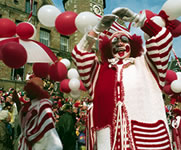
Next stop on the route is Freiburg, the "capital of the Black Forest", with its picturesque old quarter, "Bächle" (the little streams running through the town), alleyways and famous Gothic minster. We then continue through the Tuniberg region, also known as "Freiburg's vineyard", before reaching Breisach, the "Europe town" on the Rhine. Its landmark, St. Stephen's Minster, can be seen for miles around. Breisach is also home to many well-known wine and sekt (sparkling wine) producers. A few kilometres after crossing the Rhine, the route reaches Neuf-Brisach, "town of Sun King Louis XIV". The star-shaped fortress complex, which was built at the turn of the 17th/18th century, is still almost intact today. It is so vast that it can an entire town can fit inside. Next the route continues via Horbourg-Wihr to Colmar, the centre of Alsace wines. Colmar's highlights include the tanners' quarter (picturesque half-timbered buildings and canals), the Bartholdi Museum and the Isenheim Altar in the Unterlinden Museum.

Munster, a town straddling the Grosse and Kleine Fecht rivers, should be on any cheese lover's itinerary. Strong-tasting Munster cheese, which is produced from rich, tangy Vosges milk, is a speciality not to be missed. As the route enters the Munster valley, it passes the picturesque wine-growing village of Turckheim. At the end of the valley, it heads up the Col de la Schlucht, before continuing to Gérardmer, a town in a blissful lakeside setting in the heart of the Vosges mountains. After Epinal, "capital of the Vosges", we reach Vittel, home to an Olympic training centre and an area of exceptional natural beauty. The final destination is the health resort of Contrexéville, also on the French side of the border. The whole route is clearly marked with the Route Verte/Green Route logo. The parallel cycle path is signposted between Titisee-Neustadt and Munster. The Green Route takes between three and six days to complete, depending on levels of fitness and experience. The Rhineland Plain section offers easy cycling, and the hills and descents in the Vosges mountains and the Black Forest can be avoided by switching to public transport.








